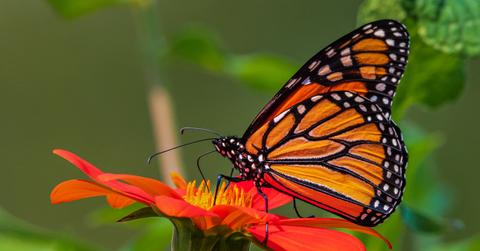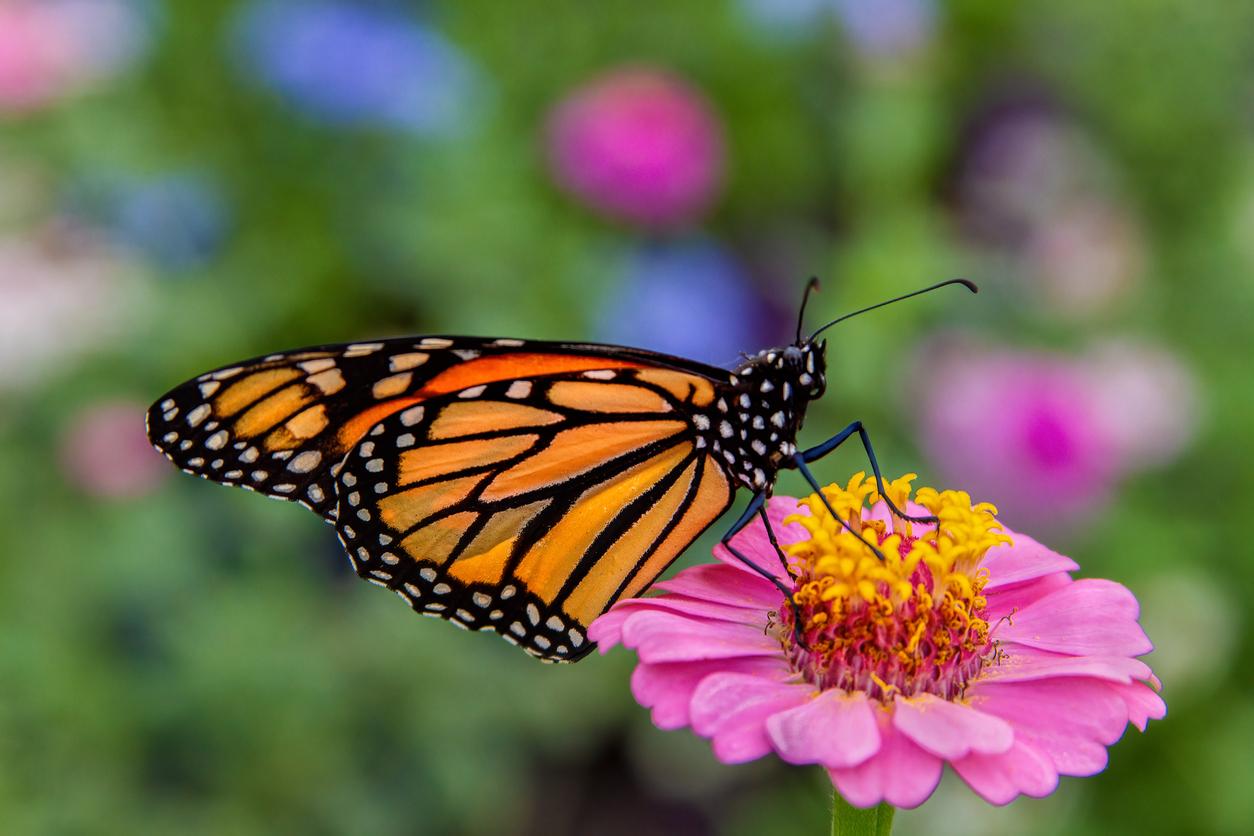Butterflies Have a Major Sweet Tooth — a Look at Their Unique Diets
A butterfly's diet isn't very diverse, but some butterfly species have unique adaptations.
Published Nov. 7 2024, 3:41 p.m. ET

Hoping to attract a flurry of butterflies to your garden to bring good luck? Knowing what types of food different insects eat can be helpful if you're starting a pollinator garden or want to help them flourish in your backyard.
While most creatures' diets are seemingly straightforward, sometimes it can be hard to pin down which creatures eat what foods. In any case, when it comes to butterflies, we've got you covered. Keep reading for what you need to know about butterfly diets, explained.

What do butterflies eat?
When you see a monarch butterfly perched atop a colorful flower, it's for good reason. Nectar from flowers occupies the bulk of a butterfly's diet. If you are wondering why the nectar is so appealing, and not, say, other substantial parts of the flower, the answer lies in a butterfly's anatomy.
According to the Australian Butterfly Sanctuary, because of the structure of a butterfly's mouth, butterflies can only source their food intake from liquids.
Butterflies allocate half of their waking hours searching for food, per the Australian Butterfly Sanctuary, which is why the nectar inside a flower — which is very high in sugar — provides the requisite energy to support a butterfly's hunt for food.
Also, a butterfly does not eat through their mouth. In fact, per Birds & Blooms, butterflies do not have mouths. Rather, butterflies consume their food through the straw-like proboscis that they use to poke into the flower to consume the nectar.

What other foods do butterflies eat?
Some butterflies, according to Birds & Blooms, live only on the nectar from flowers and the juice from fruits. While this diet provides a lot of energy to the butterfly due to the sugar, it is also low in other essential nutrients.
Likening this diet to a human attempting to live solely on sugary sodas, some butterflies who employ this diet only live for a short time, as would be expected.
The zebra longwing butterfly, however, is one butterfly with a unique adaption that allows them to intake other important nutrients from other flower parts. According to the US Forest Service, the zebra longwing butterfly not only consumes nectar from the flower but the pollen as well.
The zebra longwing butterfly's saliva breaks down the pollen, allowing them to enjoy much-needed nutrients that a nectar-only diet does not afford.
Outside these natural environments, there are additional ways to supply nutrients to butterflies in captivity.
At the Peggy Notebaert Nature Museum of the Chicago Academy of Sciences, for example, butterflies not only use their proboscis to take in the juices from a variety of flowering plants, but they also sip a mixture of honey and water from a sponge that approximates the flower nectar they would find in the wild.
Finally, rotting fruits are a favorite of butterflies both in the wild and in captivity. The reasoning is that as fruits begin to expire, they become especially sugary and soften significantly. These conditions are ripe for a butterfly's proboscis to poke through the fruit and enjoy the sugary juices within.